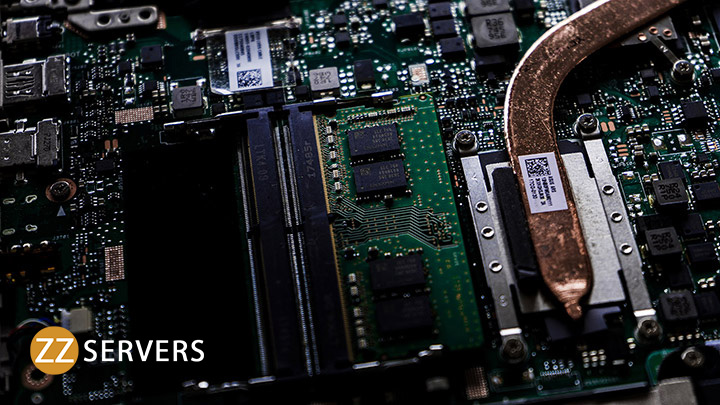In today’s digital environment, organizations must balance robust IT security and adherence to key compliance standards. This ensures customer data is protected and businesses operate ethically and legally. IT security and compliance play distinct roles in enabling organizations to thrive in the digital age.
This comprehensive guide examines the importance of IT security and compliance for organizations of all sizes. We’ll explore the key differences between security and compliance and why both are essential. You’ll learn the fundamentals of IT security protocols and compliance regulations. We’ll also discuss technical controls, audits, breach preparedness, and more. By understanding the powerful partnership between security and compliance, you can fully prepare your organization for digital success.
Defining IT Security and Compliance
Before examining how security and compliance work together, it’s important to understand what each one does independently.
The Role of IT Security
IT security focuses on protecting your digital assets and infrastructure from external and internal threats. This includes measures like:
- Firewalls, intrusion prevention systems, and anti-malware to block malicious attacks. These tools provide critical protection against outside hackers and malware attempting to infiltrate your systems and steal data.
- Access controls and identity management to prevent unauthorized access. Regulating access is crucial for ensuring that only authorized users can access sensitive systems and data.
- Encryption to protect sensitive data. Encryption scrambles and secures data so only those with the decryption key can read it. This safeguards data both at rest and in transit.
- Security training for employees on best practices. People are one of the weakest links in security, so educating staff on threats and proper protocols is essential.
Robust security protects the confidentiality, integrity, and availability of your data and systems. It’s an active, ongoing process of defense and risk management against continuously evolving threats.
The Purpose of IT Compliance
IT compliance involves adhering to laws, regulations, contracts, and security standards relevant to your industry and location. This includes frameworks like:
- PCI DSS for payment card data. PCI DSS contains mandatory controls for securely processing, storing, and transmitting credit card data.
- HIPAA for protected health information. HIPAA establishes safeguards for patient medical records and data privacy.
- SOX for financial data controls in public companies. SOX aims to protect investor interests by increasing financial transparency.
- GDPR for EU citizen data privacy. GDPR gives EU citizens control over their data and its uses.
Compliance provides a baseline for security and privacy. It also ensures you meet your legal obligations as an organization. Non-compliance can lead to lawsuits, fines, and loss of customer trust, severely damaging your business.
Now that we’ve defined IT security and compliance, let’s look at how they fit together.
Understanding the Complementary Relationship between IT Security and IT Compliance
IT security and compliance have distinct but complementary roles. Security offers the protocols and technologies to protect your systems and data actively. Compliance provides the standards and regulations you must adhere to.
Together, security and compliance offer multilayered protection geared to your industry and location.
Establishing a Baseline with Compliance
Compliance gives you standardized guidelines that lay a strong security foundation. Frameworks like ISO 27001 provide a model for infosec best practices based on industry consensus. Compliance builds essential security basics into your policies, processes, and controls by providing prescriptive requirements. This prevents you from starting completely from scratch in designing your protections.
Maximizing Protection with Security
Security builds on your compliance baseline with expanded protections. You move beyond minimum regulatory requirements to implement robust defenses based on your specific risk assessment. While compliance offers the basics, your security program is customized to your organization’s threat landscape. Advanced controls like intrusion detection systems and user behavior analytics boost resilience against sophisticated threats. Ongoing training keeps staff vigilant against the latest attack methods.
Gaining Business Benefits
Effective security and compliance offer valuable business benefits, including:
- Protection of customer data and trust by demonstrating your commitment to infosec. Customers will only do business with you if they believe their data is safe.
- Reduced risk of lawsuits, fines, and damages. Adhering to key regulations reduces your legal liability.
- Safeguarding of intellectual property and critical systems from theft or destruction. Your most vital digital assets are shielded from compromise.
- Securing certification or accreditation. Compliance certification can open partnership opportunities.
Together, security and compliance enable you to operate ethically, legally, and profitably in the digital landscape. They allow you to focus on your core business with confidence instead of worrying about security threats.

Core Components of IT Security
Now that we’ve covered the basic partnership between security and compliance, let’s drill down into the core components of IT security.
The CIA Triad Model
The CIA triad is an infosec model for guiding security efforts. CIA stands for:
Confidentiality – Protecting sensitive data from unauthorized access. Confidentiality preserves privacy and proprietary information.
Integrity – Safeguarding the accuracy of data and systems. Integrity means preventing improper data modification or corruption.
Availability – Ensuring data and systems are accessible when needed. Availability means keeping resources online and functional.
Technical and administrative controls aim to uphold the CIA. Breaches occur when one or more CIA principles are compromised, making the triad a key benchmark for security posture.
Defense in Depth
Defense in depth is a key security approach based on layered controls. The idea is to provide multiple levels of overlapping security, including:
- Perimeter – Firewalls, IPS, and proxies defend your network perimeter. They prevent unauthorized access from the outside.
- Network – Segmentation, monitoring, and access controls make your network infrastructure more secure.
- Host – Anti-malware, encryption, and system hardening protect individual endpoints.
- Application – Input validation, error handling, and logging make apps more resilient.
- Data – Encryption, tokenization, and access controls directly protect data assets.
With redundant controls across layers, damage is limited if one layer fails. A single missed control won’t expose the entire organization. This provides strong resilience.
Securing People, Processes, and Technology
Comprehensive security requires protecting people, processes, and technology across the organization:
- People – Regular security awareness training updates staff on new threat tactics and best practices. Vetting high-risk individuals through background checks limits insider threats.
- Processes – Secure software development, acquisition, change management, and other infosec processes to reduce operational risks.
- Technology – Layered preventative and detective controls create overlapping rings of protection to catch threats.
This creates a holistic culture of security that embeds protection into every business activity.
Using models like the CIA, in-depth defense, and a comprehensive approach, you can build and validate robust IT security aligned to your compliance needs and risk profile.
IT Compliance Frameworks and Controls
In addition to leveraging security best practices, compliance with key regulations and standards is required to operate in many industries.
Major Compliance Frameworks
Some major IT compliance frameworks include:
- PCI DSS – PCI DSS contains 12 core requirements for securing payment card data, spanning technology, policies, and procedures. As a merchant or processor, adherence is mandatory.
- HIPAA – HIPAA establishes controls for patient medical record confidentiality, integrity, and availability based on privacy rule and security rule requirements. healthcare entities must comply.
- SOX – SOX mandates financial controls for public companies to protect investors through transparency and accuracy. External audits assess effectiveness.
- GDPR – GDPR standardizes EU citizen data privacy rights, with substantial penalties for non-compliance. It applies to organizations with EU user data.
- ISO 27001 – ISO 27001 is an international data security standard with 114 information security controls based on CIA triad principles. It can be certified.
- NIST CSF – NIST CSF provides foundational, flexible cybersecurity guidance mapped to standards like ISO 27001. It is not mandatory itself.
Each framework has required controls relevant to the associated data or industry. Some are overlapping, while others are tailored to context.
Compliance Controls
Common controls across frameworks include:
- Policies, procedures, and training documentation formalize expectations and processes for personnel to follow. Keeping these current is essential for compliance.
- Risk assessments identify protection gaps, while audits validate control health to maintain compliance. Both should be conducted regularly by internal staff or external assessors.
- Access controls, identity management, and authorization regulate access to systems and data based on least privilege principles. These prevent unauthorized use.
- Data encryption, frequent backups, and legal retention protect critical assets and aid in recovery after an incident. Data recovery capabilities must be tested.
- Incident response and disaster recovery plans outline processes to rapidly detect, contain, and recover from events. Quick reaction limits damage.
- Secure system design and control integration create security by default rather than as an afterthought. Development teams own this.
- Vendor risk management reduces third-party security risks that could damage your compliance status. Vendor security is audited.
Certification may be required to prove compliance in highly regulated industries. Compliance maintenance is an ongoing endeavor.
Conducting Audits
Audits provide assurance that security and compliance controls are functioning effectively. They can be performed internally or by accredited external assessors.
Internal vs External Audits
Internal audits conducted by your organization’s staff provide continuous self-assessment of controls to maintain compliance with external audits. However, external auditors bring unbiased expertise.
External audits involve certified auditors formally evaluating controls and processes against recognized standards using proven methodologies. They provide independent validation required for compliance certification. External auditors are thorough and objective.
Audit Frequency
The audit frequency varies based on factors like:
- Industry regulations may mandate annual or bi-annual external audits for certification. More frequent auditing may be necessary for better security.
- Larger, complex entities have shortened audit cycles to assess portions of their sizable environments at a time. Regular audits find problems early.
- Organizations with higher-risk operations or known weaknesses require more frequent audits to monitor vulnerabilities closely. Past issues dictate needs.
- Audits focused on a single compliance framework are more frequent than full-scope reviews encompassing multiple standards. Rotation evaluates different domains.
Organizations can start with annual audits and adjust based on findings. Spot checks also supplement planned audits to keep compliance continuous.
Audit Reports
Audits result in reports assessing overall security and compliance posture while identifying specific gaps needing attention. These highlight areas like:
- Compliance deficiencies requiring remediation to meet control standards. These issues must be prioritized and planned.
- Technical, policy, or process vulnerabilities requiring fixing to lower risk exposure. Compensating controls may be needed until issues are resolved.
- Control health deficiencies needing improvement or hardening to perform as intended. Annual testing ensures controls work.
- Passing key criteria or benchmarks demonstrates your baseline compliance with stakeholders. An audit trail of reports tells a compliance story over time.
Remediating gaps quickly when identified in audits is essential for maintaining continuous compliance. Reports guide the infosec program evolution. Audits demonstrate credibility and due diligence to your organization and regulators.
Preparing for Security Incidents and Breaches
Despite best efforts, security incidents and breaches can still occur. Your security and compliance preparations will dictate how well your organization responds and recovers when this happens.
Incident Response Planning
Incident response plans are vital for rapid containment, eradication, and recovery after an incident. Key plan elements include:
- Roles and responsibilities – Who leads response, makes decisions, and communicates to internal and external parties during and after an event? Plans designate and empower responders.
- Notification procedures – When and how to contact legal counsel, customers, regulators, and other stakeholders needs to be predetermined for quick communication.
- Containment strategies – Response plans detail how to isolate and remove threats while preserving forensic evidence, including using network controls and device quarantines.
- Eradication and Recovery – Steps to eliminate the root cause of the incident through remediation while restoring systems and data from backups need to be defined ahead of time for efficient action.
- Post-incident analysis – Response plans should be updated based on lessons learned post-event to improve future response capabilities.
Testing and practice runs of response plans validate effectiveness and readiness. They familiarize responders with processes and improve reaction time.
Data Breach Notification Laws
In case of a qualifying data breach, compliance with breach notification laws is compulsory. These laws require you to notify affected individuals and regulators about the breach within a specific timeframe, which varies by jurisdiction. Proper notification is key for compliance.
Post-Breach Compliance Risks
Breaches can also create additional compliance risks, including:
- PCI levies fines for compromised payment card data, which must be disclosed immediately. The card brands expect full cooperation in forensic investigations.
- HIPAA penalties apply for unauthorized exposure of protected health information. HHS expects full analysis and containment.
- GDPR empowers EU regulators to sanction organizations for breaches involving EU citizen data. Fines can be up to 4% of global revenue for violations.
- Lawsuits may arise over breached confidential or private data, alleging your organization did not adequately protect information.
Your overall compliance program and controls face intense scrutiny after a breach. Responding properly and transparently helps manage these risks and maintain stakeholder confidence despite the incident.

Don’t Wait – Contact ZZ Servers Today for Your Security and Compliance Needs
At ZZ Servers, we recognize that IT security and compliance work hand in hand to fully protect your organization. Our experienced team has spent over 17 years securing infrastructures and ensuring compliance for businesses like yours. We provide tailored IT and cybersecurity services for organizations with 10-200 employees that value process, trust, and accountability.
We can help establish the right blend of security protocols and compliance controls to enable your digital success. Our experts perform in-depth risk assessments to identify your specific vulnerabilities, keeping you aligned with key industry regulations. We stay current on the latest threats and safeguards to create a robust defense. With ZZ Servers as your partner, you gain end-to-end guidance on frameworks like PCI DSS, HIPAA, and ISO 27001.
Don’t wait until it’s too late – ensure your organization has the right security and compliance foundations before an incident occurs. Contact our team today at 800-796-3574 for a free consultation on protecting your critical assets and maintaining compliance. We look forward to helping defend your business and upholding your reputation.
Conclusion
IT security and compliance provide organizations with the capabilities to thrive in today’s digital landscape. Compliance establishes a baseline by outlining key regulations and controls specific to your location, industry, and data types. Security builds on this foundation with expanded protections tailored to your unique risks.
By leveraging frameworks like PCI DSS, HIPAA, and ISO 27001, along with layered technical and administrative safeguards, you can implement robust security aligned with your compliance obligations. Regular audits validate controls are working optimally and that your data is protected. Proper incident response planning and breach notification enable effective response when a crisis strikes.
With IT security and compliance working in tandem, your organization gains the visibility, credibility, and resilience required to conduct business worldwide securely. Though threats persist, a commitment to ongoing vigilance, assessment, and improvement will position you for success in today’s complex digital era.
Frequently Asked Questions
u003cstrongu003eWhat are the biggest threats to IT security today?u003c/strongu003e
Some of today’s biggest cyber threats include ransomware, phishing, unsecured cloud environments, supply chain compromises, and insider threats. Threats are also increasing in sophistication, requiring ever-evolving defenses to keep pace. As threats increase, effective security and compliance becomes even more critical.
u003cstrongu003eWhat are the consequences of non-compliance?u003c/strongu003e
Potential consequences include lawsuits, regulatory fines, revoked licenses, loss of customer trust, and an elevated risk of breaches due to control gaps. Penalties vary based on factors like which regulation was violated, if data was compromised, the level of negligence, and whether harm resulted. Significant sanctions can occur in major cases.
u003cstrongu003eWhat is the difference between policies, standards, and procedures?u003c/strongu003e
Policies offer high-level direction aligned with business objectives. Standards provide specifications to meet for compliance. Procedures outline step-by-step instructions for implementing standards and policies at an operational level.
u003cstrongu003eShould I use black box, white box, or gray box testing during audits?u003c/strongu003e
Black box testing evaluates systems without insider knowledge, mimicking a real attack. White box testing leverages internal information for more thorough analysis. The gray box combines elements of both by offering auditors some system insights. The approach may vary by audit type.
u003cstrongu003eWhat are examples of preventative and detective security controls?u003c/strongu003e
Preventative controls like firewalls and access controls actively block threats. Detective controls like intrusion detection systems spot issues by analyzing patterns and logs afterward. Both controls are essential for a complete defense.



